




Everybody talks about the weather but nobody does anything about it, as Mark Twain allegedly observed. Since that’s what everybody else is doing, let’s talk something different here. Hurricane Helene is so last week. It’s actually so last month
Surely there are valuable lessons we can learn from the disaster we have endured. For example, next time 100+ mph winds are expected, don’t park there (see picture above).
But on a more practical level, were you among the majority who felt unprepared, not only for the ferocity of the storm, but to deal with its aftermath?
Odds are we won’t be seeing anything like Helene anytime soon. But we might. Or there might be another ice storm, high winds and torrential rains, floods, a tornado, or a massive heat wave that results in power outages.
What can we do to be ready for the next natural disaster, whatever and whenever it might be?
Step one: make sure you have an emergency kit ready to go. Here is a checklist of some of the basic ingredients it should contain:
_ flashlight
_ batteries
_ first aid kit
_ non-perishable food (freeze dried, for example)
_ eating utensils
_ matches or a lighter
_ tarps or plastic sheeting
_ toilet paper
_ manual can opener
_ soap/hand sanitizer
_ medications
_ eyeglasses
_ water
About that last item... the recommendations are for a several day supply of at least one gallon per person per day. At over 8 lbs per gallon, that can quickly get very heavy. There is an alternative.
Ours certainly was. The October 4 Medical Examiner would have been — key words: would have been — our 439th issue, all of them published right on time twice a month like clockwork, no matter what obstacles might have come up. And snags did arise regularly. It might be a press problem one time, a major computer glitch another time. But somehow, no deadline since Issue #1 in 2006 had been missed.
Before 2006 came twice-monthly issues of MCG’s one-time campus newspaper, the Beeper, from mid-1990 right up until two weeks before the first Medical Examiner. For me, that era included two separate bouts with cancer and everything that comes with such diagnoses: surgery, chemo, and radiation.
Another time I broke my foot and was seriously hobbled for quite awhile. More recently I had rotator cuff surgery. Through it all every issue came out on time, and I was able to continuously fulfill my duties as World’s Oldest Paperboy, all totaled for 34 straight years. Good thing I thoroughly enjoy what I do.
Who would have ever guessed that a Gulf hurricane and resulting winds in our area over 100 mph would end the run?
Not me, that’s for sure.
There’s only one thing that can be done at this point: start another consecutive issues string. This issue makes one.
— Dan Pearson, Publisher
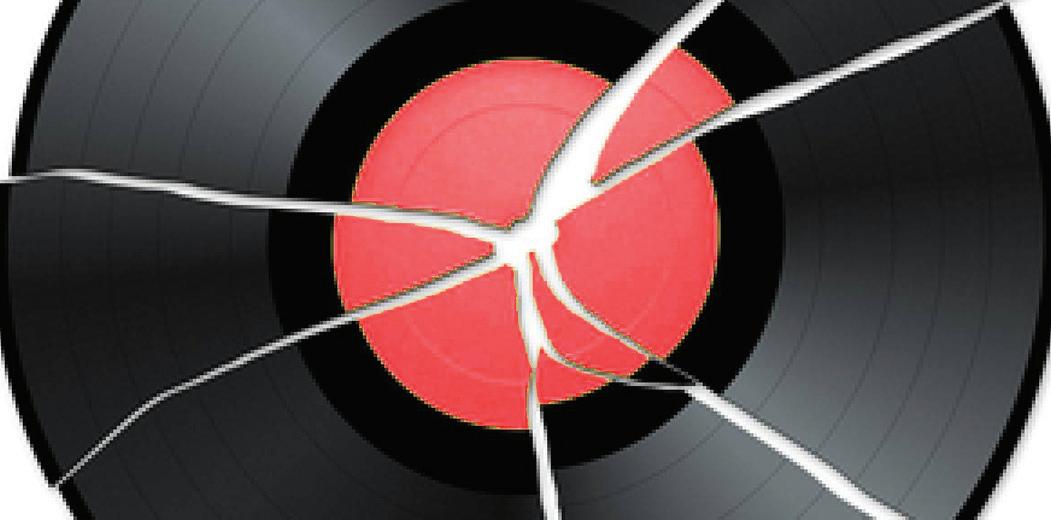
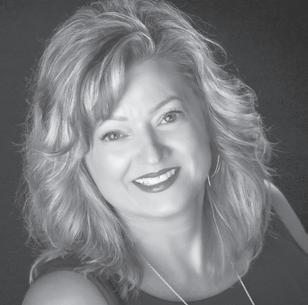











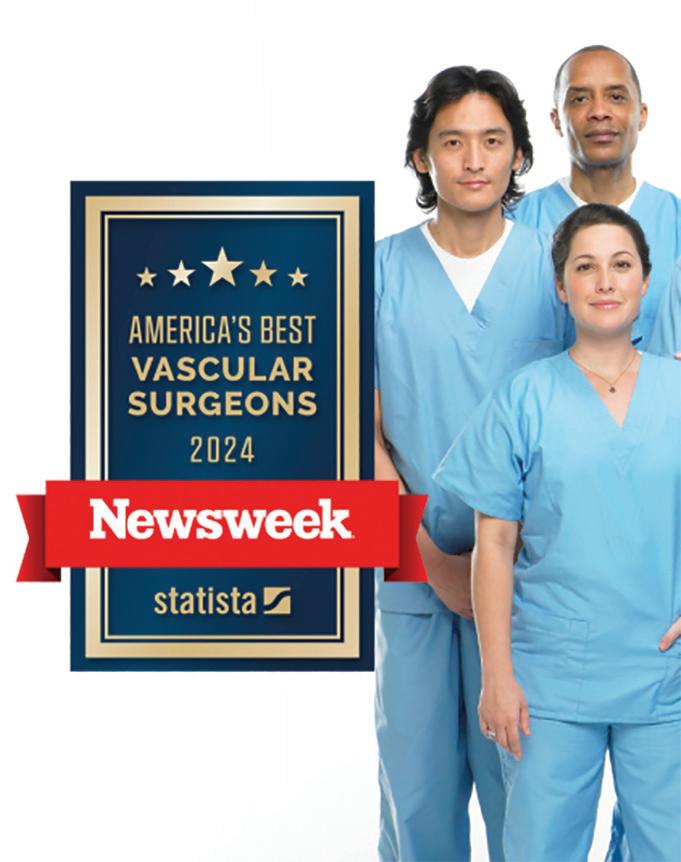


by Dr. Warren Umansky, PhD
The entire Southeast has just suffered an epic event with Hurricane Helene. It will take weeks or months before the area is back to “normal,” but will your child ever return to normal? She shows increased fearfulness, problems going to and staying asleep, a lack of interest in play, and no joy when she sees extended family. What do you do?
A. Ask your Facebook friends what to do. They always seem to have a variety of creative solutions to challenges you have faced in the past.
B. Don’t worrying about it. Things will improve when she is back in a regular routine.
C. Talk to her regularly about how each day has been a challenge, but you have all made it through the hurricane and its aftermath by being resourceful and helping each other. Remind her that each day will get better.
D. Make an appointment to see your pediatrician or a mental health professional immediately.
If you answered:
A. Your friends may be wise and creative and provide excellent advice on how to deal with moles in your yard or a grumpy boss. But do they know your child well enough for you to trust and follow their mental health advice?
B. Some children are more resilient than others. Many will bounce back in a few days or weeks. Others won’t. Be vigilant and ready to move to a more intensive approach (talking with a mental health professional or youth pastor, for example) if your child has trouble settling back into her normal routine.
C. Good communication with your child should be ongoing before, during, and after crises. “Remember when I told you how Nana and Papa were in a flood when they were young? Their parents didn’t even have water and electricity in their house when they were growing up! We’ll get through this okay.” These stories do not lessen the immediate fear, but opening the door for your child to express her fears and concerns is important.
D. Every child and adult will experience sadness, anxiety and fears about events over which they have no control. There are not enough professionals to help everyone who shows these responses to such an event. Follow the guidance of B and C above first, then seek professional assistance if those steps are not successful in reducing the intense emotions and behaviors.
Children who start with less are often not as affected by events like hurricanes and tornadoes. The more the event upends their lifestyle, the more extreme will be their response. Families who follow a rule of no electronics during the school week and have a family chore day each week, as examples, have children who have learned to do without and know how to pitch in and help around the house. Such children may be less prone to extreme reactions to adversity. In the midst of disasters, it is okay to let the kids sleep with you. And sitting down to play board games or cards together can be a stress-reducer, and can be done by candlelight. Despite your own anxieties, your child’s welfare comes first.
Dr. Umansky has a child behavioral health practice in Augusta.
As we have seen in the past three weeks, the smooth gears of civilization can start to grind and completely shut down literally overnight. Availability of even the most basic human needs — like clean water — was interrupted in Richmond County, and countless other communities between here are North Carolina. Humans can’t live long without water, but there is a remedy.
One of the best and most ingenious solutions to the interruption in safe water supplies is provided by LifeStraw. This inexpensive device (about $20) removes 99.999999% of waterborne bacteria, and 99.999% of waterborne parasites, as verified by independent lab tests. LifeStraw also filters out the tiniest of microplastics and foreign matter floating in water. A person could literally stick it into a mud puddle in the middle of the street and suck out perfectly clean drinking water, and keep doing so for the duration of an extended emergency: the device’s filtration system is rated for 1,000 gallons of use before needing to be replaced.
A LifeStraw could come in handy on a camping trip, or the next time you’re pinned in the wreckage of your partially submerged car that isn’t visible from the road for a day or two.
Other important items for successfully weathering the next storm: a few basic tools, like a pocket knife, a crescent wrench, and
screwdriver with multiple heads.
While tarps and plastic sheeting can be used for basic shelter, a tent is a better option, and it’s amazing how compact some very roomy tens can be when they are stowed. Experience tells us all the tent could very well be set up in the yard. Things happen. Hurricanes, for example.
One of the items in the list on page 1 is matches or a lighter. That’s for building a fire to prepare food or stay warm. But what will you burn? Any and all available wood or other fuel could be soaking wet.
Outdoor suppliers sell canned fuels like Sterno that are designed for easy portability, easy lighting, and safe cooking. Candles are nice to have in an emergency kit too.
The more a person meditates on potential emergency needs, the longer the list can grow. What about rope? A compass. Tote bags and ZipLoc bags. Don’t forget toothpaste, toothbrushes, and other toiletries. Many lists of must-haves include a whistle for emergency signaling, and some recommend including simple entertainment items like a deck or two of cards for those long nights withour power.
Locally, stores like Cabela’s, Camping World and others can help build an emergency kit that is portable and practical, including all the important items without turning into something that weights as much as a boat anchor.








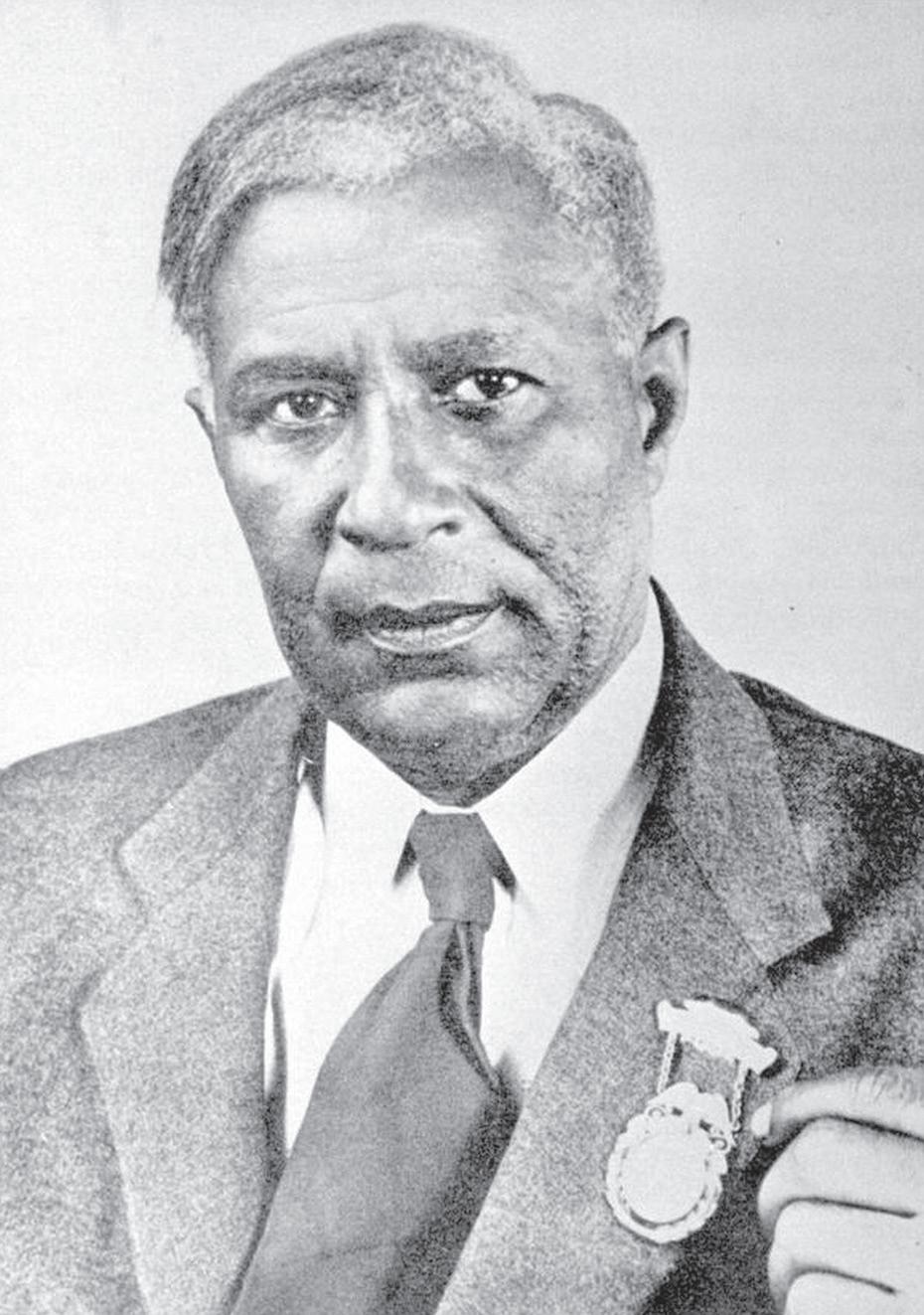
This man’s achievements would be exceptional in any context, but considering what he accomplished as a black man in an era of overt racism makes his life story even more noteworthy.
The son of freed slaves, Garrett Morgan was born in Kentucky in 1877, the 7th of eleven children. He attended school through sixth grade, then at age 14 quit school to find employment in Cincinnati, Ohio, repairing sewing machines at a clothing manufacturer. He used part of his wages to hire a tutor and continue his education, and gained a reputation as skilled repairman. He devised an improved version of the zigzag attachment for sewing machines, and by 1907 had opened his own sewing machine shop, following that a year later with an accompanying clothing store for women along with his wife.
But why is he being profiled in the Medical Examiner? After all, our focus is on health, medicine, and wellness.
Garrett Morgan directly and personally saved the lives of nine people during his lifetime, and untold tens of thousands indirectly, right down to this day.
It started with another one of his inventions, a breathing device he patented 90 years ago this week. Also described as a smoke hood, Morgan’s invention allowed its wearer to survive in an environment filled with smoke and fumes. He often demonstrated its value by building a fire using tar, sulfur, and formaldehyde in an enclosed space like a tent, and then entering the tent and staying inside for up to 20 minutes before emerging unharmed. Morgan’s Smoke Hood was bought by many fire departments and factories around Ohio. Morgan was awarded a gold medal from the International Association of Fire Chiefs for his invention, but it was an incident in 1916 that put the device on the map.
An explosion occurred on a tunnel project in Cleveland. Two attempts to rescue those involved failed; the rescuers never came back out. Someone at the scene remembered seeing a demonstration of Morgan’s smoke hood, and a messenger was sent to his home to come with as many hoods as he could. Morgan and his brother arrived in the middle of the night, still in their pajamas. Facing doubt and skepticism from the rescuers, Morgan and his brother donned the hoods themselves and used them to save a number of workers and to retrieve the bodies of those who did not survive.
The event initially resulted in orders for safety hoods from all over the country. Sadly, however, many were subsequently canceled when news photographs revealed Morgan was black. But his firm, the National Safety Device Company, survived and went on to more good things.
In fact, another of Garrett Morgan’s life-saving claims to fame is that he invented and patented (in 1922) the first traffic signal after witnessing a collision at an intersection between a car and a horse-drawn carriage. He later sold the rights for the device to General Electric for $40,000. Morgan died in 1963 at age 86. +
Older physicians often feel the need to dispense the wisdom thay have acquired to newly minted MDs who are about to descend upon the medical world. Here are a few of the “Nevers” I have heard over the years.
Never diagnose an illness you can’t cure.
Never prescribe a cure the patient can’t afford.
Never diagnose something their insurance won’t pay for. Even if you discover they have only the third known case of Northeastern Slavic Retrovirus of the left throat, resist the chance to write a paper. Diagnose acute viremia. You won’t become famous, but the patient will recover and avoid financial ruin and the resulting social devastation.
Never say “I don’t know,” even when you are uncertain of the diagnosis. Conjure up a big Latin name so the patient will have confidence in your skills and education. This will give you time to figure out the actual diagnosis. When they recover, you will be their savior from some dreaded disease no one else ever heard of.
Never be too sunny. No patient is there because they want to be.
Never be the first to arrive at a medical emergency. Get there second. If things go badly, you can blame the eager beaver. If things go well, proclaim you saved the day by straightening out the first person’s misjudgments.
Never tell a patient, “You have the same thing everyone else has.” No one wants to be ordinary. Say instead, “It’s a good thing you came to me. Others may have similar symptoms, but your
(most of the time)
A series by Bad Billy Laveau
case is more complicated. So I must treat you more aggressively.” No one with aches all over, a fever, chills, insomnia, anorexia, and who vomits in your trashcan wants to hear their condition is common.
Never hire a fat nurse to work in weight loss clinic … unless you have another nurse, a slender one, who claims to be her sister that you helped lose 40 pounds in 6 months.
Never talk more than your patient. Listen to them. They live in that body and know what is wrong even if they know neither Latin terms nor the latest terminology. Remember, infectious mononucleosis sounds more professional than “the fabulous kissing disease.” (That is what they called mono back in the 60s.)
Never discuss politics with your patients. Save that for your mother. She will love you even if your options are stupid or wrong.
Never walk with slumped shoulders. If you haven’t the strength nor determination to stand up straight, why should patients trust you to save their life? Or, for that matter, treat an ingrown toenail?
Never drive a flashy new car to your office. Patients resent you using their money to buy a car better than theirs. A two-year-old American-made car is just about right.
Never mention where you went on vacation, unless it was “to visit my grandmother, bless her heart.”
Never wear rings other than your class ring and wedding band. No diamonds or gems of any kind. No woman wants to wonder “Why can’t my husband get me a bigger diamond?” Hubby has enough problems without you making it worse.
Never go more than an hour without gargling. You never know who has a sensitive nose. Scope is cheap. Listerine smells unpleasant.
Never be late without apologizing, although your nurse can do that for you to save time. Most likely they will believe her more readily than you anyway.
Never let someone die of a heart attack coming out of your office. Arrange the body to appear they were entering your office before EMTs arrive.
Never believe everything you are told in a divorce situation. There are always three stories. His. Hers. And the truth. The truth is buried somewhere between his and hers. And you will almost never get the real truth.
Never be the first to try a new treatment … nor the last to abandon the old treatment. Sometimes being on the cutting edge is dangerous. Remember thalidomide sleeping pills for pregnant mothers?
Never argue with your wife. Sooner rather than later you are going to do whatever she says anway, so why make her mad?
Always remember these nevers.

BY J.B. COLLUM
Sometimes it takes losing something for you to fully appreciate it. Take electricity. In the wee hours of Friday, September 28th, Helene hit our area with winds in the 80 mph range and knocked the power out, along with a lot of trees and other things that are normally quite solid. The storm was supposed to head for to the northwest, but it decided not to follow the script. Instead, we somehow got bludgeoned by a storm that hit the gulf coast of Florida first, before barreling towards us. A gulf storm! A GULF storm! I expect Atlantic hurricanes to potentially impact us more than we would like, but one that first hit the beach on Florida’s “Redneck Riviera?” Not so much. I suppose if you live long enough, you will see everything.

meant moving a cylinder that weighed in the neighborhood of 150 pounds (when full) off of my truck and over to the generator. It also required maintenance, like cleaning the air filter and changing the oil after every 50 hours of usage. Sometimes the generator ran out of fuel in the middle of the night, which necessitated me getting up and refilling it and re-cranking it.
{
Our power stayed out for more than a week. Fortunately, we were prepared and had a generator. It doesn’t run everything in the house, and we have to keep it well-fed with propane or gasoline, but we were able to manage to keep the refrigerators, lights, TVs, internet, an electric griddle, the coffee maker, a single window-unit AC, and the washing machine going during our ordeal. However, we had to play the game of what had to be turned off in order to turn something else on. We had 30 amps and 5000 watts of power to play with and we had to manage it like a budget. At times we miscalculated and had to reset a breaker, but we managed. The internet did go down independently from the power outage a few times, and phone service was down the entire time, but when the internet worked, which was most of the time, we were able to use that for our phones.
To those who did without power completely, I am sure it sounds like we had it good. I can’t argue with that, but somehow having power yet having to manage it as a finite resource instead of giving it no thought at all put me in mind of a metaphor.
Having life is great, of course, but not having it doesn’t incur any suffering at least, because it requires no effort on your part and you don’t even think about it anymore. Death is the opposite of life, after all. But having to get by on a small fraction of the power you are used to having requires some compromises and some work.
Getting back to literal power, besides having to trade off what we could run, I also had to find more fuel to put in the generator and this required waiting in lines, sometimes interminably long lines. It also required paying a lot more money per kilowatt hour than we are used to paying. Then there is the work of getting the fuel to the generator, which in the case of propane,
All things considered though, my wife made an insightful observation. As we were about seven days into our adventure without power from the utility company, I was boring her by discussing my strategies for improving our situation the next time we are faced with an extended power outage. I was talking about building out a better solar power system for the house and upgrading our generator so that we could run more at once. As I paused to take a bite, she smiled and said, “You’re loving this, aren’t you?” I had to laugh, because as much as it surprised me, I was loving it. It was life beyond the mundane existence. It wasn’t primitive like the pioneer days by any means and it wasn’t as primitive as tent camping, but it wasn’t the regular old run-of-the-mill life that anyone could do. It felt special in a way.
Physically speaking, middle age tends to reduce our energy budget. It varies per person, but it demands a rebalancing. When we’re young, it isn’t always a matter of making a choice between two or more strenuous activities, or between staying out late and getting up and going to work the next day. You can choose both, or all. At least sometimes. And guess what? You get away with it most of the time. As you get older, you have to make choices. Do you stay out late for an after dinner dessert or maybe even some dancing, or do you get up early in the morning to go to work or take care of some household chores? Do you save some money by changing your own oil or brake pads, or do you save your back and your time and pay someone else to do it?
Whatever your individual energy budget is, don’t waste your precious time lamenting any reductions in it. Get comfortable with the present situation. Treat it like an adventure. Figure out how you can still manage to derive pleasure while having and doing less. Simplify. Focus on what is truly important, and you will be much happier for it.

J.B. Collum is a local novelist, humorist and columnist who wants to be Mark Twain when he grows up. Reach him at johnbcollum@gmail.com


Due to space constraints (this is only a 16-page newspaper, and there are ads and other articles that need their space too), we’ll only be able to provide an abbreviated answer.
It’s important to note at the outset that, while no sane and healthy person enjoys throwing up, it can be a very good thing indeed.
That’s because one of the functions of vomiting is to get rid of toxins from the stomach. A complex automatic response is triggered that leaves no doubt: the body wants this stuff out — right now. It could be something foreign, like dish soap, or it could be some food that we didn’t realize was contaminated or past its prime when we ate it.
One of the protective mechanisms that starts the process is nausea. Again, who likes that feeling? But it’s beneficial because it stops us from ingesting more of the offending substance — or anything else, for that matter.
When the unwanted matter is detected, mucosal cells in the stomach light a fuse that ignites a group of neurons in the brainstem known, at least among some scientists, as “the vomiting center.”
From there, signals are sent to the stomach, diaphragm, esophagus, and even the small intestine, to start a rhythmic process of contracting and relaxing. This process can even force the contents of the small intestine back into the stomach, confining the problem to the stomach and preventing it from being absorbed further. When the contractions progress to the point of no return, the esophagus actually shortens, the flap known as the glottis closes preventing stomach contents from entering the lungs, the mouth opens involuntarily, and the offending stomach contents are propelled from the body. It’s a very efficient system.
What about all the other reasons that could fill up pages on their own? Even a short list of why we vomit would include rollercoasters and other dizzying fair rides, pregnancy, chemotherapy, radiation, anesthetics, migraines, and everyone’s favorite, ordinary garden-variety flu.

www.AugustaRx.com
The Medical Examiner’s mission: to provide information on topics of health and wellness of interest to general readers, to offer information to assist readers in wisely choosing their healthcare providers, and to serve as a central source of salubrious news within every part of the Augusta medical community.
Direct editorial and advertising inquiries to: Daniel R. Pearson, Publisher & Editor E-mail: Dan@AugustaRx.com
AUGUSTA MEDiCAL EXAMINER P.O. Box 397, Augusta, GA 30903-0397 (706) 860-5455
www.AugustaRx.com • E-mail: Dan@AugustaRX.com



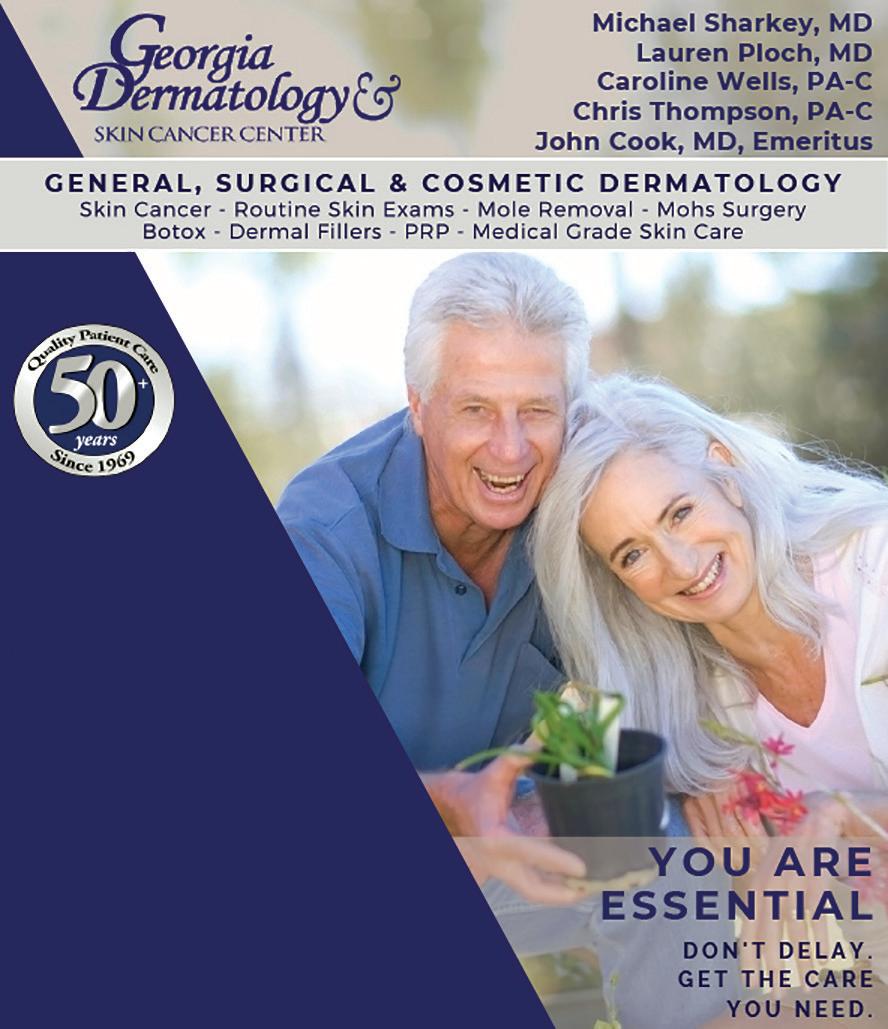

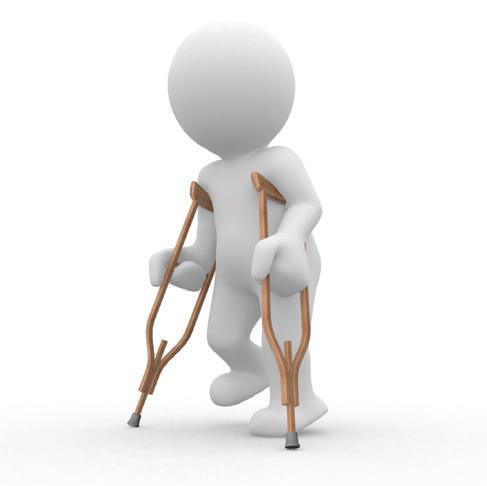
Twenty-five years ago, this girl escaped the big city for some country living. Several heart-poundingly scary critters entered my world immediately. Copperhead snakes slithered inches from my toes. Bull snakes hid in my kitchen pantry. Huge scorpions scampered across my farmhouse floor. Neighbors rushed to my rescue at my first high pitched screech. But none compared to my first encounter with the MRI Monster Machine at the hospital. It all started several years ago on a cold New Year’s Eve.
Now, I may be a strong Texas woman, but when it comes to being strapped down on a cold hard table and sliding into a coffin-like tunnel, I break out in cold sweat. (But hey, aren’t ladies supposed to glisten?) Industrial strength anxiety gripped my being the instant the MRI Monster Machine engulfed me. Then the deafening banging began.
My brain wasn’t having that. “Get me out of here! NOW!” erupted from my throat. They gave me a nerve pill. No help. Anxiety worsened. (How can anyone calm down with all the banging and clanging that infernal machine was producing?)
The techs were not exactly sympathetic. “Call your husband up here to calm you down. We all want to go home and celebrate the New Year.” Normally, my husband didn’t answer his phone. Thankfully, on the first ring, he answered. Further disaster was averted, bless his little heart.
It only took three hours to escape my terrifying experience. The procedure done, paperwork completed, I prayed never to see the Monster Machine again. Unfortunately though, it wasn’t done with me.
When the next time came around, I was determined to conquer the Monster Machine. Two lovely lady technicians understood I was claustrophobic. They did the procedure in two sessions, giving me a break to escape my medical coffin and allow me a few minutes to recover.
I was determined that fear would not win this time. I told them to put a cloth over my eyes and crank up my western swing music because I was going to “Boot Scoot” my way through that tunnel. They laughed and said, “Dance all you want in your head, but don’t move your body. Save that for the honky tonks.”
I smiled. They giggled. The dreaded Monster Machine had met its match. And lost. Score one for the three Texas ladies. I strutted out of there proudly. I had overcome the fear I had battled for many years. I’m not saying I won’t be anxious if there’s another MRI in my future. Should I get an invitation to grapple with the fearsome MRI Monster Machine again, I’ll just grab my favorite CD, slip on my fancy boots, and shuffle my way through that coffin tunnel. But I’m confident I will be able to stay calm, dance to the music, and before you know it, I’ll roll back out of that Monster Machine none the less for the wear.
After all, MRIs ain’t so bad. Not anymore. Those clicks and clangs and bangs don’t mean a thang. I’ll put them to shame. And so should you.
— Sent to the Medical Examiner by Bonnie Bishop Case, Bluff Dale, TX

Kim Beavers, MS, RDN, CDCES
facebook.com/eatingwellwithkimb
Bring out the kid in everyone with this flavorful little wrap that’s perfect in a bag lunch for all ages. Get a heart-healthy nutrient and antioxidant boost from the almond butter, sunflower seeds, and cherries in this crunchy wrap.
Ingredients
• 2 8-inch whole grain tortillas or wraps
• 2 tablespoons almond butter
• 2/3 cup sprouts
• 2 tablespoons sunflower seeds
• 2 tablespoons raisins
• 2 tablespoons dried cherries
Directions
Spread one tablespoon almond butter evenly over each tortilla. Sprinkle 1/3 cup sprouts evenly over the almond butter on each tortilla, then sprinkle with one tablespoon sunflower seeds, 1 tablespoon raisins, and 1 tablespoon dried cherries. Tightly roll up each tortilla, then slice in half. Serve immediately or wrap in plastic to prevent the wrap from drying out.
Yield: 2 wraps
Nutrition Breakdown:
Calories 362, Carbohydrate 48g, Fiber 7g, Protein 9g, Fat 17g, Saturated fat 1g, Sodium 195g.
Recipe used with permission: The Plant-Powered Diet: the lifelong eating plan for achieving optimal health, beginning today. By Sharon Palmer, RD. For more information visit www.sharonpalmer.com by

Variations: Substitute hemp butter, tahini, and peanut butter or walnut butter for the almond butter. Try substituting dried apricot slices, dried blueberries, dried cranberries, or dried apple slices for the cherries. And you could replace the sunflower seeds with chopped walnuts, pistachios, almonds,



pecans, or hazelnuts. The possibilities are endless.

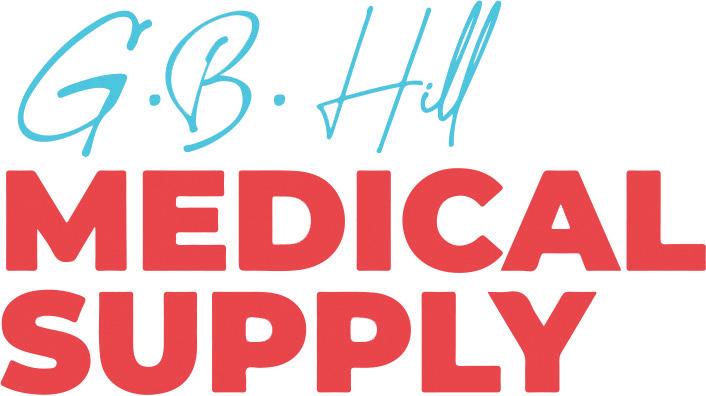
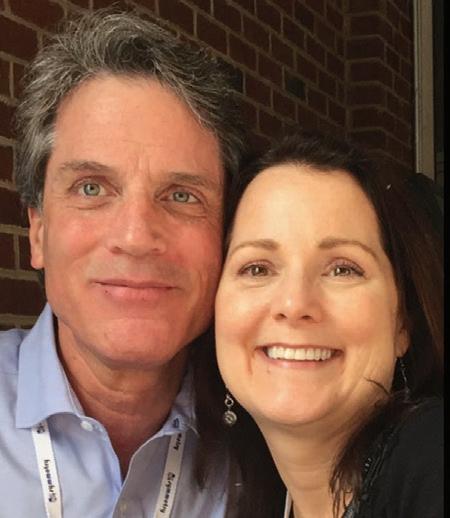
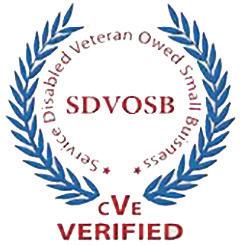

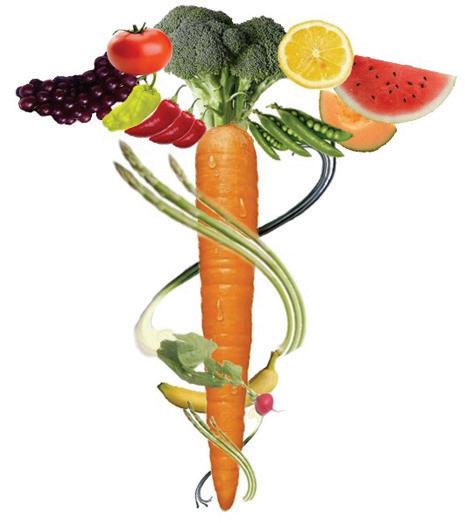
Judy, a Facebook friend from Thomson GA, writes:
“I am seeing more ‘special’ versions of foods at the grocery store, especially breads, cereals and grains, that say they are based on biblical teachings. They are usually higher priced than other foods. Are they healthier?”
It is not your imagination, Judy. There are many versions of “special” foods in the supermarket these days, and they are usually much more expensive than regu lar groceries. They can add a significant financial strain to your food budget. Just a small sampling of such products might include eggs that are from free range chickens, salmon from natural streams, and breads, cereals, and grains based on religious scriptures. Overall, these products are the result of very clever marketing and advertising. Do they make you healthier and offer better nutrition? No.

these elitist foods are healthier than the rest of us? No.
Is it OK to take the stress off your food budget and go back to buying the “regular” versions of these groceries and foods? Absolutely.
These products push the exclusionary idea of “elitist nutrition.” What do I mean by that? The phrase describes the concept of a two-tiered food system. With this approach, one tier of foods is designed for more affluent people who can spend more money on “healthier” and more nutritious food. The other tier is for the rest of us poor souls, who must settle for the drab, ordinary, less-nutritious foods.
Next, add the marketing gimmick suggesting that these special foods have some science behind them, or are somehow based on messages or principles from a higher power. Presto! You have a successful marketing formula for getting people to spend more money on what should be ordinary, low-cost food. It is particularly troublesome if you are one of many people trying to make ends meet on a limited food budget. Buying elitist foods is a poor use of your food dollar. Is there any data to show that people who buy
As a simple example, let’s look at the popular idea that more expensive breads, cereals, and grains marketed as being based on biblical teachings are worth the extra cost. True, many (not all) of the nutrition principles that are found in religious writings like the Bible are, indeed, similar to contemporary nutrition recommendations from most major health organizations. For example, religious teachings warn about gluttony. In religious writings, as in contemporary nutrition guidelines, you find recommendations for eating fruits, vegetables, nuts, and whole grain foods. You can also find some unsafe nutrition principles in the Bible too, such as drinking raw milk or using dairy products made from raw milk. Don’t do that. But have you ever seen McDonald’s, Burger King, Chick-Fil-A or Arby’s mentioned in the Bible? Do foods advertised based on religious teachings contain extraordinary health benefits? Again, no.
Checking my local supermarket, I found that a loaf of store-brand whole wheat bread cost $2.57, but a loaf of “biblical-based” whole wheat bread cost about $7. Quite a difference in price. Does the $7 loaf of whole wheat
bread contain high quality nutrients? Yes. Does the $2.57 loaf of whole wheat bread also contain high quality nutrients? Yes. Both loaves are high in fiber, low in sugar and high in other nutrients. Is there a need to spend so much more on the elitist version of whole wheat bread? No. Thank goodness nutritious, healthy food is available to everyone in this country, and you do not have to spend more money to buy healthier food.
Is there a free and readily available reference to help you buy healthier, less-expensive, plain old groceries when you shop? Yes. It is called the “Nutrition Facts Label.” Before you buy a food, read and consider the nutrition facts. The food you are about to buy should be a source of important nutrients, such as wholegrain carbohydrates, fats, proteins, vitamins, and minerals. The food you are about to buy should also be low in saturated fat, sugar, and salt. Just as importantly, think about what you are going to eat for the entire meal, what you are eating during the entire day or week, and if you are making a sandwich, what you are going to put on the healthy bread you’ve bought.
What is the “No-Nonsense Nutrition” advice for today? Don’t fall for marketing gimmicks. Don’t fall under the spell of “elitist nutrition.” You do not have to spend more money to have great nutrition. Simple, healthy food should be and is available to everyone.
What do I do with all the money I save by avoiding elitist nutrition products? I buy flowers that we put on the table with every meal and feed our souls as well as our bodies. +
Have a question about food, diet or nutrition? Post or private message your question on Facebook (www.Facebook.com/AskDrKarp) or email your question to askdrkarp@gmail.com If your question is chosen for a column, your name will be changed to insure your privacy. Warren B. Karp, Ph.D., D.M.D., is Professor Emeritus at Augusta University. He has served as Director of the Nutrition Consult Service at the Dental College of Georgia and is past Vice Chair of the Columbia County Board of Health. You can find out more about Dr. Karp and the download site for the public domain eBook, Nutrition for Smarties at www.wbkarp.com Dr. Karp obtains no funding for writing his columns, articles, or books, and has no financial or other interests in any food, book, nutrition product or company. His interest is only in providing freely available, evidenced-based, scientific nutrition knowledge and education. The information is for educational use only; it is not meant to be used to diagnose, manage or treat any patient or client. Although Dr. Karp is a Professor Emeritus at Augusta University, the views and opinions expressed here are his and his alone and do not reflect the views and opinions of Augusta University or anyone else.
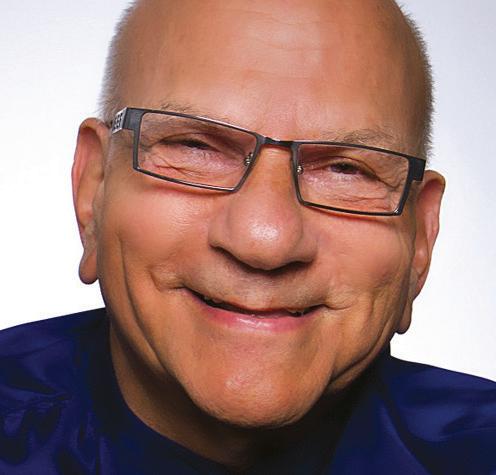



Tasty tips from registered dietitians with the Augusta Dietetic District Association
by Elizabeth (Lizzie) Keen, MS, RD, LD, CNSC Registered Dietitian at Augusta Oncology Multispecialty Clinic
Trick-or-Treat, not too sweet, give me something good to eat! It is almost that time of year...the leaves are about to change colors, pumpkin spice is everywhere you turn, and before we know it, costumed kiddos will be out and about searching for treats to fill their plastic pumpkins. As an avid lover of all things October, I was counting down the days until it was socially acceptable to bring out the spider webs and begin the fall festivities. Halloween is coming soon, and to kick off spooky season, here are some ghostly good tips on how to have a more healthful holiday. But before diving into that vat of apples, first enjoy some fun facts about how trick-or-treating came to be.
Trick-or-treating is a tradition that has been around for centuries. Though its true origin is unclear, it can be traced back to ancient Celtic festivals, early Roman Catholic Holidays, medieval times, and even British Politics. Halloween itself stems from the ancient pre-Celtic festival of Samhain that was celebrated on the night of October 31st. Participants gathered to light bonfires, offer sacrifices, and pay their respects to the dead. During which, villagers were disguised in costumes made of animal skins to drive away unwanted visitors and food was left out to appease unwelcome spirits. In later centuries, people dressed up as ghosts, monsters, and other malevolent creatures, and performed “tricks” in exchange for food and drinks. This custom, called “mumming,” dates back to the Middle Ages and is thought to be the predecessor of the term “trick-or-treating.”
Many years later, similar Celtic and Catholic
traditions emerged. November 2nd was designated as All Souls’ Day, a time for honoring the dead. While celebrations in England resembled those of Samhain with bonfires and masquerades, less fortunate folks would visit houses of wealthier families to receive pastries called “soul-cakes” in exchange for prayers for the homeowner’s deceased. This practice, known as “souling,” was later adopted by children going door to door asking for gifts, or “treats.”
Similar practices took place in Scotland and Ireland, called “guising,” where young people dressed up in costume and accepted gifts in exchange for singing, reciting a poem or joke, or performing some other “trick” before collecting their “treat.” Now that you are well versed in Halloween history, let’s talk trickor-treating healthful hacks. Ready for ways to make Halloween more nutritious but still delicious? Here are some bloody good tips that even Dracula would approve!
• Feed kids a healthy dinner before trickor-treating! A hearty meal filled with protein, fiber, and heart healthy fats will keep them fueled, full, and help decrease those raging sugar cravings. Having a sweet treat after a meal rather than on an empty stomach helps decrease blood sugar spikes and prevent overeating excess sugar.
• Portion out your kid’s treats: Moderating sweet intake rather than consuming treats all at once will help lower sugar intake but still allow children to enjoy their Halloween haul.
• Try offering healthful alternatives to candy. It has become tradition to offer dif-

ferent types of candy to those at your doorstep, but there are many healthier sweet treat options. Consider keeping a basket of whole fruit like apples or mini oranges, granola or protein bars, fruit bars/leathers/gummies, snack packs of popcorn or pretzels, boxes of raisins, nuts, or trail mix for more healthful alternatives. You can keep candy as an option too, but you might be surprised to see what kids choose.
• Make healthier candy choices: Many candy brands often have unnecessary additives and dyes. Try some cleaner alternatives. Brands like Unreal, Justin’s, Yum Earth, Skinny Dipped, Bear, and Annie’s all have candy options that contain simple ingredients, less sugar, and are still tasty!
• Take a walk or move around after eating sweets! Exercising after sugar intake helps better manage blood sugar and is great for strengthening muscles. Take a 15-30 minute walk after having your next sweet treat- your metabolism will thank you!
• Encourage good hydration. Excess sugar intake makes you thirsty! Consider keeping mini water bottles on hand to give out to weary trick-or-treaters so they can hydrate on the go.
• Participate in the Teal Pumpkin Project! Those partaking keep a teal-colored pumpkin full of allergen free (non-food) items so that kids with food allergies can safely participate in Halloween festivities without fear of an allergic reaction. You can sign up on the FARE website at foodallergy.org. They have a list of low cost, easy to find, non-food treat options to hand out!
• Read your labels! For kids with food allergies, many candies may be off limits or pose the risk of cross-contamination. It might be best for kids to wait to eat their treats until parents can review labels and ensure safety. Those with severe allergies, keep an epi-pen on hand just in case!
• Stay safe! In light of recent hurricane devastation, it is possible there will still be fallen trees and debris on or near the roads, power lines down, standing water, etc. Make sure kids pay attention to their surroundings! Have them bring flashlights or head lamps, and travel in groups or use the buddy system. Keep in sight, or stay in contact.
I hope these tips are hauntingly helpful. Good luck trickor treating, and have a happy, healthy Halloween boys and ghouls!
Resources: https://www.eatrightpro.org https://www.foodallergy.org https://www.history.com https://images.google.com https://parentingchaos.com/halloween-monster-apples https://www.pinterest.com



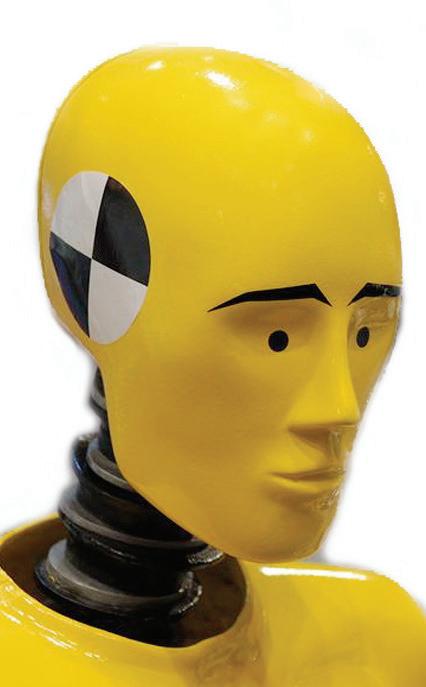
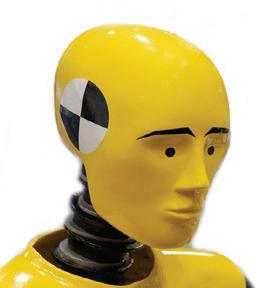
One of the major impacts from Hurricane Helene was its effect on traffic. In neighborhood after neighborhood, streets were completely blocked by fallen trees. Routes people had smoothly used for years became obstacle courses presenting one dead-end after another. Some people were blocked in for days. We heard the comment more than once that drivers got lost, or at least disoriented, in their own neighborhoods. Familiar landmarks were gone.
Even passable streets were often one-lane, and very narrow lanes at that, crowded in on both sides by mountains of logs, branches, tree trunks and branches, not to mention power lines slithering across the roads and draped everywhere.
Of course, power was out for days, which had a major bad effect on traffic in a number of ways.
For one thing, thousands of drivers hit the roads using what little gas they did have to try to find more. It was a futile effort, at least for the first several days after the hurricane.
On the other hand, it did show the fundamental optimism of the human spirit: our roving traffic observers noted long lines for gas that led down several major thoroughfares, ending up at gas pumps outside stores that were not even open. And probably would not be for days. But there were people right at the pumps, waiting expectantly, hoses still hooked into the gas pumps, though.
It was the kind of thing where the first five cars that pulled in sparked the next five, and then those ten sparked twenty more, and then fifty more, and pretty soon the line was out of sight down the road.
Sightseeing no doubt places hundreds, if not thousands of additional cars on the roads. It was ill-advised if not fully understandable; you just don’t see this kind of widespread devastation every day.
A couple of things were surprising, however. In other words, not understandable.
One thing was what can only be described as aggressive driving. Our spotters reported numerous incidents of more or less extreme tailgating. The spotters didn’t feel safe driving at normal pre-hurricane speeds, considering that there were still unmarked power lines hanging down for days, on both side streets and main roads.
But driving a little cautiously was quite often not acceptable, judging by the frequency of tailgating.
Finally, the biggest surprise noticed by many was the reaction of drivers to traffic light outages.
As pointed out on the Medical Examiner’s Facebook page (Facebook.com/AugustaRx), we would have thought that what to do in such situations would be Drivers Ed 101, but apparently not.
For all those who missed that day of class, here’s what was covered. It will come in handy the next time traffic signals are out someplace.
First, here’s what it does not mean: it does not mean that cars on one of the roads flow through the intersection by the dozens, interrupted only when a driver on the crossing road finally gets impatient and starts to inch out into the crossing traffic, forcing the flow to finally stop.
Here’s what it does mean: when traffic lights are out, the intersection becomes a 4-way stop, and all the relevant rules apply. Everyone stops. It also does not mean that when someone obeys this rule and does stop that the driver of the following car should lay on his horn, although many people seemed to think this is the proper response. But no, traffic is supposed to take turns going in sequence. If two cars stop at exactly the same moment, the one to the right goes, the one to the left waits for his turn. It works perfectly in organized civilization, not so much in chaos.

QUITTING… continued from the back page
2. Review your finances
Take a hard look at your emergency fund or cash reserves
Make sure you have enough cash to fund living expenses for three to six months. If your cash reserves are low, consider stopping any monthly savings you are doing to build the cash up. This is one of the few times we recommend reducing savings.
Additionally, consider selling items you no longer use or need, such as extra furniture, tech gadgets, or even a second vehicle. These sales can generate quick cash to strengthen (or protect) your emergency fund.
3. Protect your future
During the transition, try to avoid pulling money out of retirement accounts before age 59.5, which can result in a 10% penalty plus taxes.
Having liquidity and access to cash during a job transition is very important. Make sure you have a game plan. Instead of pulling funds from your retirement accounts, you might want to look into liquidating non-retirement investments like brokerage accounts or mutual funds.
These types of accounts typically don’t carry penalties for early withdrawals and can be tapped into to cover short-term needs. If those aren’t an option, it may be helpful to establish a personal line of credit with your bank to access funds without impacting your retirement.
4. Take advantage of all your available employee benefits before you leave
Make all those health care appointments with your in-network doctors. If you have a flexible spending account or FSA, make sure you review the rules. It is oftentimes advantageous to use the funds before you leave employment.
Beyond health care benefits, review any additional perks that might slip under the radar, like gym memberships, wellness programs, or educational reimbursements. Some companies offer these resources until your last day of employment, so take full advantage.
It is important to understand what days you will get paid for if you leave. If your company compensates you for unused leave days or offers bonuses, make sure you know what you’re entitled to. This can be a meaningful financial boost. Some companies require specific criteria to be met for these payouts, so take the time to review your employer’s policies and maximize what you can take away as you transition.
5. Update Your Health Insurance
After leaving your employer, health coverage may become an immediate concern. Consider enrolling in COBRA to continue your existing health plan or exploring options in the health insurance marketplace. This can keep you protected in case of unexpected medical expenses while you’re transitioning.
You may also decide to hop on your spouse’s or partner’s health plan, if applicable. Be mindful of any enrollment deadlines to avoid lapses in coverage, and calculate how much these new premiums and out-of-pocket costs will impact your budget.
If you’re thinking of taking the leap to a new career soon, or you want to quit and don’t have the next step in mind, it’s the perfect time to examine your finances. Reviewing your financial situation can help you prepare for unexpected challenges, should they arise.
Contact our financial advisors if you need help creating a comprehensive financial plan. We use The Lifetime Financial Solution™ to provide financial planning for our clients. This is a comprehensive system designed to guide us as we work together to help you achieve your life goals.

by Clayton Quamme, CFP® a financial planner with AP Wealth Management, LLC (www.apwealth.com). AP Wealth is a financial planning and investment advisory firm with offices in Augusta, GA.

on October 12, 2022
A recent study in England found that walking just under 10,000 steps a day reduces a person’s risk of developing dementia by 50 percent. Pick up the pace to a “brisk” walk (over 40 steps per minute), and that risk goes down even further. Perhaps most strikingly, the authors found that even a low number of daily steps was associated with a reduced risk of dementia.
The best benefits are brain benefits.
The walking study is the latest finding in a long line of research that links exercise to our brain health. In fact, some authors have suggested that through a brainhealthy lifestyle, an individual may reduce their lifetime risk by 70 percent. I’ve found that the health interventions that benefit the brain [are] the most impactful. Get physically active. Mentally stimulated. Socially connected. Lower your blood pressure, your cholesterol, and your blood sugar.
You don’t have to be a brain expert to know that healthy habits lead to healthy living. But it’s nice when a brain expert offers quantifiable reminders. So, here are a few:
Walk. Cardiovascular health has been linked to better brain health. Improving your cardio fitness does not need to be strenuous or difficult. It can be as easy as walking for 30 minutes a day. Check your pulse rate at the end of your walks and track it over a month. See the number fall? That’s a good indication that your heart (and your brain) are benefitting from your efforts.
Eat well. Reducing your sugar, blood pressure, and cholesterol not only improves heart health but brain health, as well. That’s because high blood sugar levels and high blood pressure cause blood vessels in the brain to affect thinking and memory.
See your doctor. Many physicians are equipped with resources for our aging population – especially for cognition and brain health. Your primary care physician can provide tools and education to guide patients with baseline assessments and screenings. This means your doctor is better informed than ever to help you identify early signs of cognitive decline – and direct you to the help you might need.
Forgetting a name from time to time or misplacing your keys does not mean you are on the road to Alzheimer’s disease. As we get older, it is natural for our brains to get a little slower (if also a little wiser). However, should your cognitive problems get worse over time or interfere with your day-to-day life, it might be time to see a specialist.
Several neurological diseases cause a progressive decline in memory, thinking, reasoning, personality, or behavior. Alzheimer’s, Parkinson’s disease, Lewy body disease, and others all fall under the umbrella term “dementia.” If you’re over the age of 65, you are at increased risk of developing dementia. In fact, it is estimated that 50 percent of people have changes in the brain that could lead to dementia. That is why taking steps to lower your risk is so important.
Nine thousand eight hundred and twenty-six of them, to be exact.
Aaron Ritter is a psychiatrist
Editor’s note: This installment of the blog spot appeared previously in the Oct. 21, 2022 edition of the Examiner


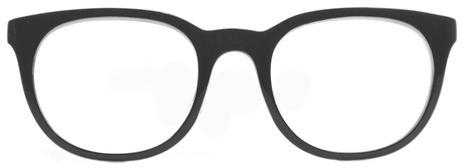









I’m so mad at my kids right now. Why the long face?

EXAMINER CROSSWORD
What happened?
I told them I never want to live in a vegetative state, dependent on a machine and fluids from a bottle.

1. Hyper letters
5. Use it to stop
10. Kitty in an office wager
14. Hilo feast
15. Nimble
16. Running in neutral
17. Shakespeare was one
18. Collection of facts book
20. Large area employer
21. Matured
22. Pyromaniac’s deed
23. Go from first to second
25. Drug category, in brief
26. Type of pin
28. USC Aiken team
31. Liquid waste
32. Noted artist family
34. I Like _____ (50s political slogan)
36. Assemble
37. Local Orchard
38. Egg cell
39. NBC show
40. Aquatic possum
41. Over or under follower
42. Commercial in London
44. Justly
45. North American deer
46. Black _________
47. Sound of a bagpipe
50. Having a sound mind
51. What GRU became
54. Not divided into separate parts
57. Sudden sharp pain
58. Eating regimen
59. Body landmark
60. Skin eruption
61. Cation prefix
62. Mimicry
63. Norse god of thunder
1. Hollywood’s Jessica
2. Couple or pair (poetic)
3. Longest-serving mayor in Atlanta history
4. A flop
5. Appease; placate
6. The Nile flows through it
7. Gaming cubes
8. Entirely
9. Zodiac sign
10. Georgia county named for the 14th US president
11. Probability
12. Potpourri
13. Containing little fat
19. Cabbage ______
21. Ceremony
24. Seize (archaic or poetic)
25. Solemn promise
26. Totals
27. James Brown is one
28. Quarter bushel
29. Major local artery
So why are you mad?
by Dan Pearson
They canceled my cable, put a treadmill where my recliner was, and poured out all my whiskey.

Simply unscramble the letters, then begin exploring our ads When you find the correctly spelled word HIDDEN in one of our ads — enter at AugustaRx.com
We’ll announce the winner in our next issue!
30. Cranium
32. Cried
33. Ming, once an NBA star
35. TV award
37. Riverwalk, for example
38. Home of Case Western Reserve University
40. Shouts
41. Walk in shallow water
43. Truth
44. In a very skilled manner
46. Word that can precede color
47. Unexplained death of a baby (acronym)
48. Make a sweater
49. Notion
50. Ballesteros, to friends
52. Monte’s last name?
53. Lyft competitor
55. Entry level nurse (abbrev)
56. Music genre
57. Calendar abbreviation
X A M I N E R

DIRECTIONS: Every line, vertical and horizontal, and all nine 9-square boxes must each contain the numbers 1 though 9. Solution on page 14.

DIRECTIONS: Recreate a timeless nugget of wisdom by using the letters in each vertical column to fill the boxes above them. Once any letter is used, cross it out in the lower half of the puzzle. Letters may be used only once. Black squares indicate spaces between words, and words may extend onto a second line. Solution on page 14.
Use the letters provided at bottom to create words to solve the puzzle above. All the listed letters following #1 are the first letters of the various words; the letters following #2 are the second letters of each word, and so on. Try solving words with letter clues or numbers with minimal choices listed. A sample is shown. Solution on page 14.


here once was a king who stood all of 12 inches tall.
He was a terrible king, but he made a great ruler.
Moe: You know anything about origami?
Joe: The Japanese art of folding paper into decorative shapes and designs? Sure. I used to do it all the time.
Moe: Why did you quit?
Joe: Too much paperwork.
Moe: Why did the urologist lose his medical license?
Joe: He got in trouble with his peers.
Moe: Did you play football back in your school days?
Joe: No, I couldn’t. I wear glasses.
Moe: What does wearing glasses have to do with anything?
Joe: Football is a contact sport.
Moe: Why is your wife so mad at you?
Joe: She says I lack empathy. I totally don’t understand how she can feel that way.
A man goes in for a job interview.
Interviewer: “So what’s your biggest strength?”
Man: “I have an excellent memory.”
Interviewer: “Ok, give me an example.”
Man: “Of what?”
Interviewer: “You just said you have an excellent memory.”
Man: “Yes I do. How did you know that?”
Interviewer: “Because you just told me.”
Man: “No I didn’t. If I had told you I would remember. I have excellent memory.”
Interviewer: “Give me an example then.”
Man: “Of what?”
Interviewer: “Never mind, let’s move on.”
Man: “Move on from where?”
Interviewer: “From that question.”
Man: “What question?”
Interviewer: “The memory question.”
Man: “I don’t think I asked you a memory question.”
Interviewer: “Wow, your memory is absolutely terrible.”
Man: “Yeah, I have really bad memory.”
Interviewer: “Then why didn’t you just say that from the start?”
Man: “Say what from the start?”
Moe: Could you take my very short-statured neighbor with you to the store?
Joe: Sure. I was going to Aldi if that’s ok. Moe: Hmm. She’s more of a Lidl person.
Moe: I took a urine test at my doctor’s office this morning.
Joe: Your kleptomania is out of control!

Staring at my phone all day has certainly had no Effect on ME!
Dear Advice Doctor,
try as they might, no one can stare at their phone all day.

By popular demand we’re making at-cost subscriptions available for the convenience of our readers. If you live beyond the Aiken-Augusta area, or miss issues between doctor’s appointments — don’t you hate it when that happens? — we’ll command your mail carrier to bring every issue to your house!
NAME
ADDRESS
CITY STATE ZIP
Choose six months for $24 or one year for $42 . Mail this completed form with payment to Augusta Medical Examiner, PO Box 397, Augusta GA 30903- 0397



I’ve been in a new relationship for about six months now and it’s going pretty well. One of the problems with my old boyfriend was that he felt the need to share every last thought he had. It was the polar opposite of the silent treatment and it was exhausting. My new boyfriend is the polar opposite of that; he’s the strong silent type. Now I’m discovering I don’t like being kept in the dark either. How can I attain some kind of balance in this matter?
— Too Much, Now Too Little
Dear Too, Too,
Thank you for writing in about this important matter that many of us have experienced lately. Turns out pretty much nobody likes to be kept in the dark for long.
I know personally I was quite disoriented right after the storm, and I was in my own house. I didn’t realize how much we depend on various small lamps and night lights to get around in the dark. We were definitely happy to see the break of dawn. Then late that first day (Friday) we went to the shelter they opened up in the gym at Patriots Park because all our phones and flashlights were dead and we could charge them there. Driving home in total, complete darkness was an unreal experience. On the other hand, that was the best night of the entire ordeal: virtually no light pollution, no generators running anywhere yet, and not a cloud in the night sky. The stars were amazing (and there were far fewer trees blocking the view). It was a spectacular night.
But to address your need for balance, here are a few suggestions. At the top of the list, cost-wise, would be a whole house generator. They kick on the moment the power fails so the lights, air conditioning and appliances keep running. That can be literally lifesaving if someone in the house is medically dependent upon a steady power supply.
Since that is neither a need nor an option for everyone, there are plenty of other strategies to keep a modest amount of light going, starting with flashlights. It’s good to have both battery-powered and rechargeable models since, as we have just seen, sometimes it isn’t possible to recharge them for an extended period of time. Another option is solar powered lighting, which often illuminates immediately and automatically in darkness. There are also electric lamps that have battery backup. In effect they’re always charging so they are ready to go when power fails.
Thanks for writing, and I hope I answered your question. Do you have a question for The Advice Doctor about health, life, love, personal relationships, career, raising children, or any other important topic? Send it to News@AugustaRx.com. Replies will be provided only in the Examiner.



BUT HOPEFULLY THE ENTRIES THIS TIME WILL APPEAR AS THEY ARE SUPPOSED TO . SEE RULES IN THE BOX BELOW.
...wherein we hide (with fiendish cleverness) a simple word. All you have to do is unscramble the word (found on page 12), then find it concealed within one of our ads. Click in to the contest link at www.AugustaRx.com and enter. If we pick you in our random drawing of correct entries, you’ll score our goodie package!
SEVEN SIMPLE RULES: 1. Unscramble and find the designated word hidden within one of the ads in this issue. 2. Visit the Reader Contests page at www.AugustaRx.com. 3. Tell us what you found and where you found it. 4. If you’re right and you’re the one we pick at random, you win. (Winners within the past six months are ineligible.) 5. Prizes awarded to winners may vary from issue to issue. Limited sizes are available for shirt prize. 6. A photo ID may be required to claim some prizes. 7. Other entrants may win a lesser prize at the sole discretion of the publisher. 8. Deadline to enter is shown on page 12.

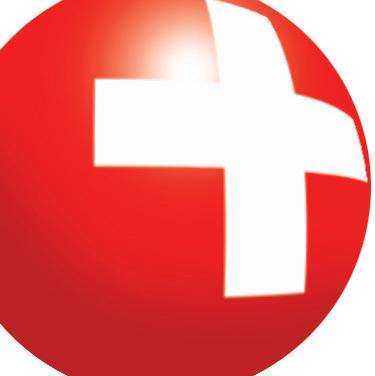

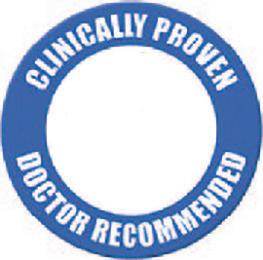
ACUPUNCTURE
Dr. Eric Sherrell, DACM, LAC Augusta Acupuncture Clinic 4141 Columbia Road


706-888-0707 www.AcuClinicGA.com 3633 Wheeler Rd, Suite 365 Augusta 30909 706-432-6866


‘em or lose ‘em!




L. Carter, MD 1303 D’Antignac St, Suite 2100 Augusta 30901 706-396-0600 www.augustadevelopmentalspecialists.com






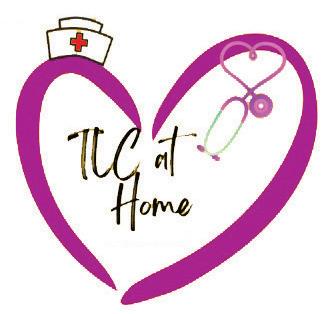




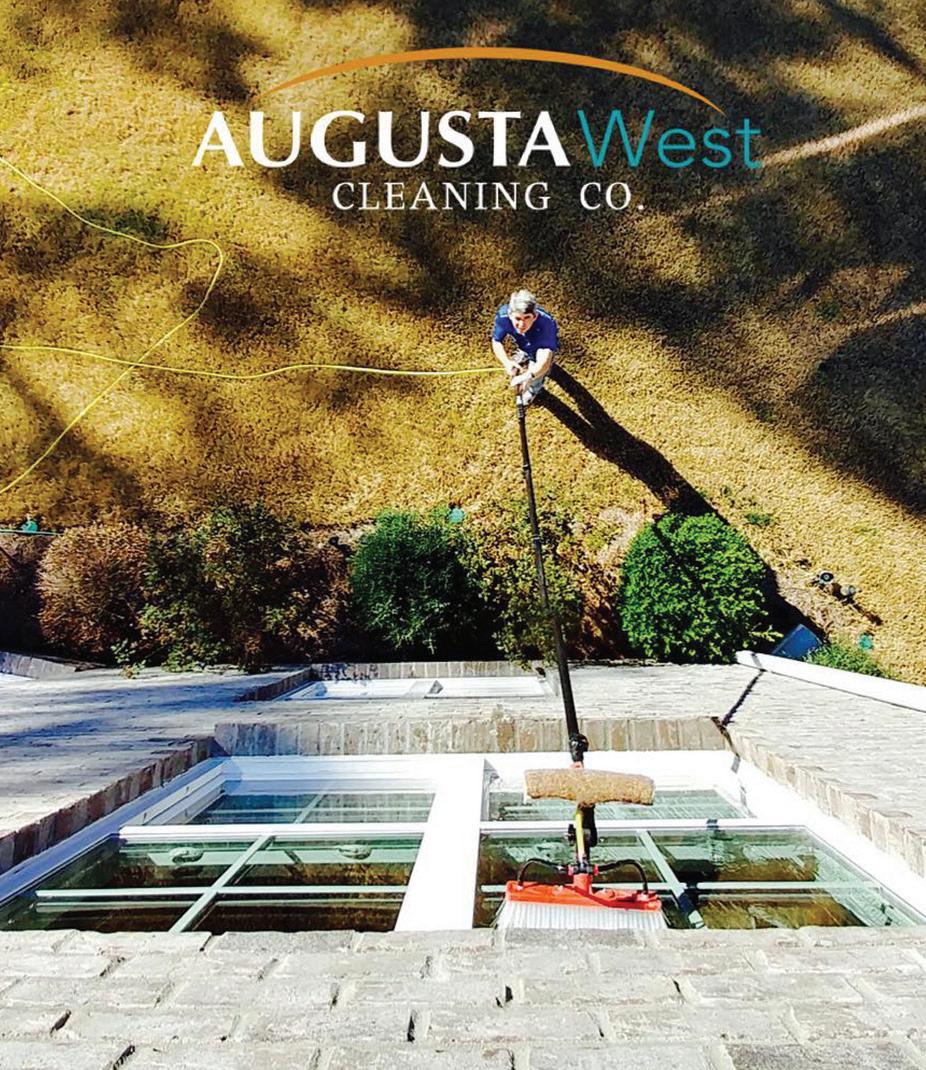










Leaving a job is a major decision that comes with plenty of uncertainties. Whether you’re considering a career shift, taking a break to explore new opportunities, or making a fresh start in a different field, it’s important to feel financially secure before making a move. Without a plan, you might find yourself scrambling to cover day-to-day expenses or feeling forced to take the next available role just to stay afloat.
Taking time to reflect on how your financial situation could change during this transition is key. Are there adjustments you can make to your budget, or savings you can bolster to reduce stress during the change? Assessing your financial position now will help you move forward with greater confidence and reduce the risk of unexpected setbacks along the way.
Many people don’t have the luxury financially to quit a job they’re unhappy with without a strong financial footing. If you find yourself in a position where you would like to explore your next career move, here are 5 ways to prepare your finances before you quit your job.
1. Find another job
The best way to make a job transition less stressful is to already have another job lined up. It is best practice to secure your next job before leaving your current job. That will reduce the financial impact.
Beyond finding a new job, think about starting side hustles or offering freelance services that align with your skills. This can add a layer of financial security and serve as a way to explore different career paths without rushing into a new full-time role. Testing out these opportunities now can also help you see if they could become long-term options.



Having gone the week before for lab work, it was now the day for my annual physical check-up. After weighing in, checking blood pressure, and everything else they do, the doctor came in.
We were discussing the lab results when he said, “You are just about perfect on paper, but... you have just reached eighty and from here on it will be day to day.”
After leaving his office, the more I thought about it the more the little devil on my shoulder took control. I wrote a poem and mailed it to my doctor at his office.
Now let me stress that I liked my doctor and considered him a friend as well. It has now been almost fifteen years since that day and we have both laughed about the incident many times.
On paper, I’m just about perfect, My doctor said so today, I felt like a million dollars, Until he had more to say.
“Our aim was to help you reach eighty, Which we have been able to do, From thi s point on, it’s day to day, The rest is left up to you.”
Somehow I just can’t appreciate, The wise adv ice he was giving, Don’t remind me of the short time left, While I’m still so busy living.
I didn’t hatch in a cabbage patch, I may not have attended college, Yet I exercise both body and mind, I have a fair degree of knowledge.
I am aware of my elderly age, I have fallen, I have blundered, Please don’t impose a limit on me, I may live to be one hundred.
— by Mary Carson Aiken, SC






